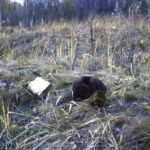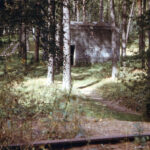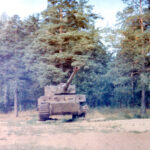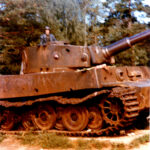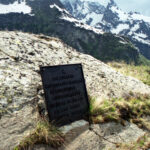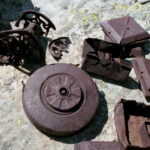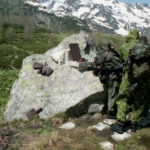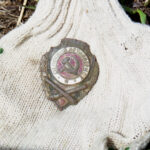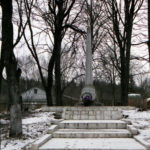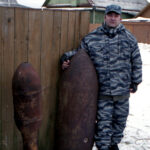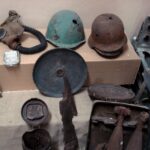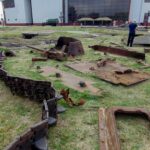The collection of the Museum of Armored Vehicles in the city of Saumur, Loire Valley contains two very rare Soviet tanks – KV-1 and T-34, which fought on the Eastern Front. Given the technical modifications and history of these exhibits, we can confidently call them unique. We, the Association of Friends of the Tank Museum, have prepared a guide and description of the Battlefields of the Second World War on the Eastern Front, as well as the process of the finding and extracting everything that remains in the earth, rivers, swamps and mountains. This Guide is based on the personal experience, archival materials, photos and videos of the authors, who for a long time had a special position in this process. The research and extract of the armored vehicles from the great depths, 5-20 meters in the ground or a swamp, is very complex, we will describe it in details. To begin with, a little history about the search movement in the USSR and the Russian Federation.
Search and collecting the items from the WW2 battlefields during the Soviet era.
Immediately after the end of hostilities, certain works were carried out on those liberated from the German occupiers – mine clearance, collection of weapons and other items by a special trophy team. Given the nature of the battles, as well as the climatic conditions of the area, impenetrable swamps, forests, mountains, military equipment and weapons have been on the surface for decades. The Soviets never appreciated cultural values, and the legendary German “Tigers” in the 50s and 60s were shot as targets and sold for scrap. Even in Russia, until the 2000s, military equipment on the battlefields was considered by local residents solely as an opportunity to earn money for scrapping cut pieces of tanks, cars, guns, and even mines and shells that had been cleared on their own. Shell casings, which had expensive “non-ferrous” metal – brass and copper, were especially valued.
- WW2 bunker, M.B. photo 1983, L1
- Leningrad battlefields, M.B. photo 1983, L2
- Hitler bunker Führerhauptquartier Bärenhöhle, Smolensk, M.B. 1983
- Pz.Kpfw. VI Tiger shot at a training ground near Moscow
- WW2 German Pz.Kpfw. VI Tiger, with holes, early 90s
“Relic hunting” in the USSR, did not officially exist, and it does not exist now. The sappers neutralized the found mines and shells, the police (now the police) took away the found small arms and ammunition. Pioneers, the young communists, collected the remaining iron for free on the certain holidays and carried it to school to earn thanks. Adults sometimes rented scrap metal for the small money. Every schoolchild dreamed of finding a cartridge case, bullet, bayonet or helmet, bringing it home and showing it to friends. This occupation was dangerous, since many finds were grenades, shells and mines, there were many cases of explosion and death of children. Usually this came from irresponsibility and ignorance of the structure of dangerous finds. The grenade was sawn exactly in the middle, the tol was smelted on a fire from shells.
The only official search process on the battlefield was the search parties. The losses of the USSR during the Second World War have not been determined so far, the figure reaches several tens of millions of people. The situation in the first years of the war was difficult, up to 2 million only surrendered and many more went missing. The Soviet command never humanely treated soldiers who had to die for their homeland and be in unmarked graves. Even 75 years after the Second World War, search parties find hundreds of soldiers every year, most of whom do not have a name, and sometimes even a unit number.
“Memory Watch”, twice a year, while there is no grass, in the spring and autumn, was held first in the USSR, then during the Russian Federation. If in the USSR the number of search teams was measured in units, then in the Russian Federation the number goes to hundreds. The search for the military equipment, primarily the WW2 tanks, has become an independent area of search work, with its own characteristics and difficulties.
- Caucasus Mountains operation “Edelweiss”, M.B. 2004
- Artifacts found in Soviet times serve as a monument to the soldiers who died here, M.B. 2004
- Restricted border area – our guide with a machine gun
- Excellent gunner badge, found by a metal detector, keepsake souvenir
- Operation Mars – Tver, Rzhev, WW2 memorial to fallen Soviet soldiers, M.B. 2005
- Very dangerous finds from Operation Mars, the battle for Rzhev, M.B. 2005
Search for the tanks and armored vehicles at WW2 battlefields
- Items found on WW2 battlefields in a local museum
- Remains of soviet tanks found at the battlefields


